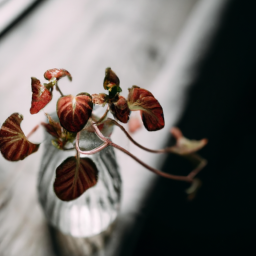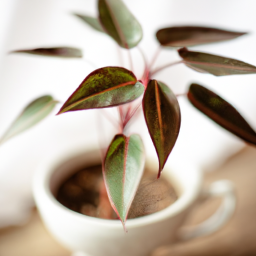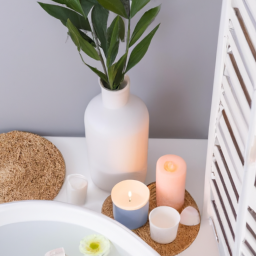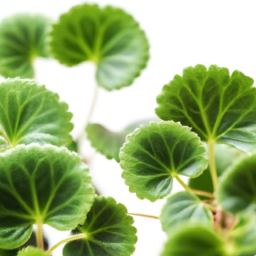
Are you looking to bring a touch of nature into your home? Botanical art is the perfect way to incorporate plants into your home decor and create a serene and fresh atmosphere. Whether you have a green thumb or struggle to keep plants alive, botanical art offers a low-maintenance and stylish solution. In this blog post, we will explore the beauty and versatility of botanical art and provide tips on how to incorporate it into your home decor. So, let’s dive into the world of botanical art: incorporating plants into home decor!
The History and Evolution of Botanical Art in Home Decor
Welcome to the fascinating world of botanical art in home decor! In this article, we will explore the rich history and evolution of incorporating plants into interior design. From ancient civilizations to modern trends, plants have always played a significant role in enhancing the beauty and ambiance of our living spaces.
Ancient Origins
The use of botanical art in home decor can be traced back to ancient civilizations such as Egypt, Mesopotamia, and China. These cultures recognized the aesthetic appeal and symbolic value of plants, incorporating them into their homes and sacred spaces. Botanical motifs were often depicted in paintings, murals, and tapestries, showcasing the diverse flora of the region.
During the Renaissance period, botanical art gained further prominence with the emergence of botanical gardens and the development of scientific illustration. Artists like Leonardo da Vinci and Albrecht Dürer meticulously documented and illustrated plants, contributing to the growing interest in botanical art as both a scientific and artistic pursuit.
Fast forward to the Victorian era, and botanical art experienced a resurgence in popularity. The Victorians had a deep fascination with nature and used plants extensively in their home decor. Botanical prints, pressed flowers, and elaborate floral arrangements adorned their walls, furniture, and textiles. This era marked a pivotal moment in the integration of botanical art into mainstream interior design.
Modern Revival
In recent years, there has been a renewed interest in botanical art as people seek to reconnect with nature and create harmonious living spaces. The modern revival of botanical art in home decor can be attributed to several factors, including the rise of sustainable living, the wellness movement, and the desire for biophilic design.
Sustainable living has become a global priority, and incorporating plants into home decor aligns perfectly with this ethos. Plants not only purify the air but also add a touch of greenery that brings life and vitality to any room. From potted plants to vertical gardens, there are endless possibilities for incorporating botanical elements into your home.
The wellness movement has also played a significant role in the resurgence of botanical art. Studies have shown that exposure to nature and green spaces can reduce stress, improve mood, and enhance overall well-being. By incorporating botanical art into our homes, we can create a sanctuary that promotes relaxation and rejuvenation.
Biophilic design, a concept that emphasizes our innate connection with nature, has gained traction in the world of interior design. This approach seeks to incorporate natural elements, including plants, into our living spaces to create a sense of harmony and balance. Botanical art serves as a powerful tool in achieving this goal, allowing us to bring the beauty of the outdoors inside.
Practical Tips for Incorporating Botanical Art
Now that we have explored the history and revival of botanical art in home decor, let’s delve into some practical tips for incorporating this art form into your own living space:
1. Choose the Right Artwork: Select botanical art pieces that resonate with your personal style and complement your existing decor. Consider the size, color palette, and overall theme of the artwork to ensure a harmonious integration.
2. Create a Gallery Wall: Arrange a collection of botanical prints or paintings on a feature wall to create a stunning focal point. Mix and match different sizes and frames for an eclectic yet cohesive look.
3. Experiment with Botanical Patterns: Incorporate botanical patterns into your upholstery, curtains, or wallpaper for a subtle and elegant touch. This allows you to infuse botanical elements into your decor without overwhelming the space.
4. Explore Botanical Sculptures: Consider adding botanical-inspired sculptures or ceramics to your home. These three-dimensional pieces can add texture and visual interest to your decor.
5. Embrace Natural Materials: Use natural materials such as rattan, wicker, or wood in your furniture and accessories to complement the botanical theme. This creates a cohesive and organic feel throughout your space.
6. Incorporate Living Plants: Don’t forget to bring in actual living plants! Choose a variety of indoor plants that thrive in your space and place them strategically to create a lush and vibrant atmosphere.
By following these tips and embracing the beauty of botanical art, you can transform your home into a haven of natural serenity. Let your creativity flourish as you incorporate plants and botanical elements into your decor, and enjoy the soothing and rejuvenating ambiance they bring to your living space.

Tips and Techniques for Creating Botanical Art Pieces for Home Decoration
Introduction
Creating botanical art pieces for home decoration can add a touch of nature and beauty to any living space. Whether you are a seasoned artist or just starting out, incorporating plants into your home decor can bring a sense of tranquility and freshness. In this guide, we will explore various tips and techniques to help you create stunning botanical art pieces that will enhance the ambiance of your home.
Choosing the Right Plants
When it comes to botanical art, choosing the right plants is crucial. You want to select plants that not only have visually appealing features but also complement your existing home decor. Here are some tips to consider when selecting plants for your botanical art pieces:
1. Research and Explore: Take the time to research different types of plants and their characteristics. Look for plants that have interesting shapes, colors, and textures that will translate well into your artwork.
2. Consider Maintenance: Depending on your level of commitment and gardening skills, choose plants that are easy to maintain and care for. If you are a beginner, opt for plants that require minimal watering and sunlight.
3. Size Matters: Consider the size of your artwork and the space where it will be displayed. Choose plants that will fit well within the dimensions of your artwork and won’t overwhelm the space.
Preparing Your Materials
Once you have selected the perfect plants for your botanical art pieces, it’s time to prepare your materials. Here are some essential steps to follow:
1. Gather Your Supplies: You will need a canvas or a suitable surface for your artwork, paint or other coloring materials, brushes, and a palette. Additionally, have a pair of scissors or pruning shears handy for trimming the plants.
2. Preparing the Canvas: If you are using a canvas, make sure it is clean and free from any dust or debris. You may also choose to prime the canvas with a layer of gesso to create a smooth and durable surface for your artwork.
3. Preparing the Plants: Before incorporating the plants into your artwork, ensure they are clean and free from any pests or diseases. Trim any excess leaves or stems to achieve the desired shape and size.
Creating Your Botanical Art Piece
Now that you have your materials ready, it’s time to dive into the creative process of incorporating plants into your home decor. Here’s a step-by-step guide to help you create a stunning botanical art piece:
1. Plan Your Composition: Before you start, visualize how you want your artwork to look. Arrange the plants on your canvas or surface, experimenting with different layouts and compositions. Consider the balance, color harmony, and focal points of your piece.
2. Secure the Plants: Once you are satisfied with your composition, use a non-toxic adhesive or glue to secure the plants onto the canvas. Be mindful of the drying time of the adhesive to prevent any movement or displacement of the plants.
3. Add Depth and Texture: To create depth and texture in your artwork, consider layering different plants with varying heights and shapes. This will add visual interest and dimension to your piece.
4. Paint or Enhance: Depending on your artistic preference, you may choose to paint or enhance certain aspects of your botanical art piece. Use watercolors, acrylics, or other coloring materials to add depth, shadows, or highlights to the plants and background.
5. Protect and Display: Once your artwork is complete, consider applying a protective varnish or sealant to preserve the plants and colors. This will also make your art piece more durable. Finally, choose an appropriate frame or display method that complements your home decor and showcases your botanical art piece beautifully.
Conclusion
Incorporating botanical art into your home decor can be a rewarding and creative endeavor. By following these tips and techniques, you can create unique and captivating art pieces that breathe life into your living space. Remember to choose the right plants, prepare your materials properly, and let your creativity flow. Enjoy the process and embrace the beauty of nature in your home.

Inspiring Ideas for Incorporating Botanical Art into Different Areas of Your Home
Botanical art is a wonderful way to bring the beauty of nature into your home decor. Whether you have a green thumb or not, incorporating plants into your living spaces can create a fresh and vibrant atmosphere. In this article, we will explore inspiring ideas for incorporating botanical art into different areas of your home. From the living room to the bathroom, there are endless possibilities to add a touch of nature to your surroundings.
Living Room
The living room is often the heart of the home, where you relax, entertain, and spend quality time with family and friends. Adding botanical art to this space can create a calming and inviting ambiance. Here are a few ideas to get you started:
1. Gallery Wall: Create a gallery wall with a mix of botanical prints and paintings. Choose a variety of sizes and frames to add visual interest. You can also mix in other nature-inspired elements like pressed flowers or botanical illustrations.
2. Hanging Planters: Install hanging planters from the ceiling or use wall-mounted planters to add greenery to your living room. Choose plants with interesting foliage or flowers to create a focal point in the room.
3. Terrariums: Display small terrariums on your coffee table or side tables. These miniature gardens enclosed in glass containers can add a whimsical touch to your living room decor.
Kitchen
The kitchen is another area where botanical art can thrive. By incorporating plants and botanical elements into your kitchen decor, you can create a fresh and vibrant space that inspires your culinary adventures. Here are a few ideas:
1. Herb Garden: Create a mini herb garden on your kitchen windowsill. Use small pots or hanging planters to grow fresh herbs like basil, mint, and rosemary. Not only will they add a pop of green to your kitchen, but you’ll also have fresh herbs at your fingertips while cooking.
2. Botanical Backsplash: Consider using botanical-themed tiles or wallpaper for your kitchen backsplash. This can create a stunning focal point and add a touch of nature to your cooking space.
3. Hanging Baskets: Hang baskets filled with trailing plants, such as pothos or ivy, from the ceiling or above cabinets. This will add height and visual interest to your kitchen while bringing in a natural element.
Bathroom
The bathroom is often a space where we seek relaxation and tranquility. Incorporating botanical art into your bathroom decor can create a spa-like atmosphere and add a touch of serenity. Here are a few ideas:
1. Living Wall: Install a living wall or vertical garden in your bathroom. This can be achieved by mounting planters on the wall or using a modular system. Choose plants that thrive in humid environments, such as ferns or air plants.
2. Botanical Prints: Hang botanical prints or pressed flowers in frames on the bathroom walls. This can add a touch of elegance and nature-inspired beauty to your bathroom decor.
3. Aromatherapy Plants: Incorporate plants with relaxing scents, such as lavender or eucalyptus, into your bathroom. Place them on shelves or countertops to release their calming aromas.
By incorporating botanical art into different areas of your home, you can create a harmonious and nature-inspired living space. Whether it’s a gallery wall in your living room, a herb garden in your kitchen, or a living wall in your bathroom, there are countless ways to infuse botanical beauty into your home decor. Get creative and let nature inspire your design choices!
Here are the Essential Points
Botanical art has become a popular trend in home decor, bringing the beauty of nature indoors. Incorporating plants into our living spaces not only adds a touch of freshness but also creates a calming and serene atmosphere. Whether you have a green thumb or struggle to keep plants alive, there are various ways to embrace this trend and bring the outdoors in.
One simple way to incorporate botanical art into your home decor is by using framed botanical prints. These prints can be found in various styles, from vintage to modern, and can be easily hung on walls or placed on shelves. They add a pop of color and a touch of nature to any room. Another option is to display pressed flowers or leaves in frames or shadow boxes. This DIY project allows you to create personalized and unique pieces of botanical art that can be showcased on walls or used as tabletop decor. Additionally, you can bring in live plants and create a mini indoor garden. From small succulents to larger potted plants, there are options for every space and level of gardening expertise. Not only do live plants purify the air, but they also bring life and vibrancy to any room. Consider grouping plants of different sizes and textures to create an eye-catching display.
Let me leave you with some FAQs:
Q1: What is botanical art?
A1: Botanical art refers to the practice of creating artistic representations of plants, flowers, and other botanical subjects. It involves capturing the intricate details, colors, and textures of plants through various artistic mediums such as painting, drawing, or photography.
Q2: How can I incorporate botanical art into my home decor?
A2: There are numerous ways to incorporate botanical art into your home decor. You can hang botanical prints or paintings on your walls, display pressed flowers in frames, or use botanical-themed fabrics for throw pillows or curtains. You can also incorporate real or artificial plants into your decor, creating a botanical ambiance in your living space.
Q3: Where can I find botanical art for my home decor?
A3: You can find botanical art for your home decor in various places. Online marketplaces, art galleries, and even local botanical gardens often offer a wide selection of botanical art pieces. You can also explore the work of local artists, attend art fairs, or visit specialized botanical art websites to find unique and beautiful pieces that suit your taste.
Q4: Can I create my own botanical art?
A4: Absolutely! Creating your own botanical art can be a fulfilling and creative endeavor. You can start by learning basic drawing or painting techniques and then practice capturing the beauty of plants and flowers. You can experiment with different mediums, such as watercolors, colored pencils, or even digital art. Don’t be afraid to let your creativity bloom!
Q5: How can botanical art enhance my home’s atmosphere?
A5: Botanical art has the power to bring nature indoors, creating a soothing and refreshing atmosphere in your home. The vibrant colors and intricate details of botanical art can add visual interest and a sense of tranquility to any space. It can also evoke feelings of connection with nature, promoting relaxation and well-being. By incorporating botanical art into your home decor, you can create a harmonious and inviting environment.

Alex Turner is a sustainable gardening advocate and the founder of an acclaimed indoor gardening blog. With a focus on eco-friendly practices and urban sustainability, Alex combines his background in environmental studies with his love for plants to educate readers on mindful indoor gardening. His work highlights the importance of nurturing both plants and the planet.


